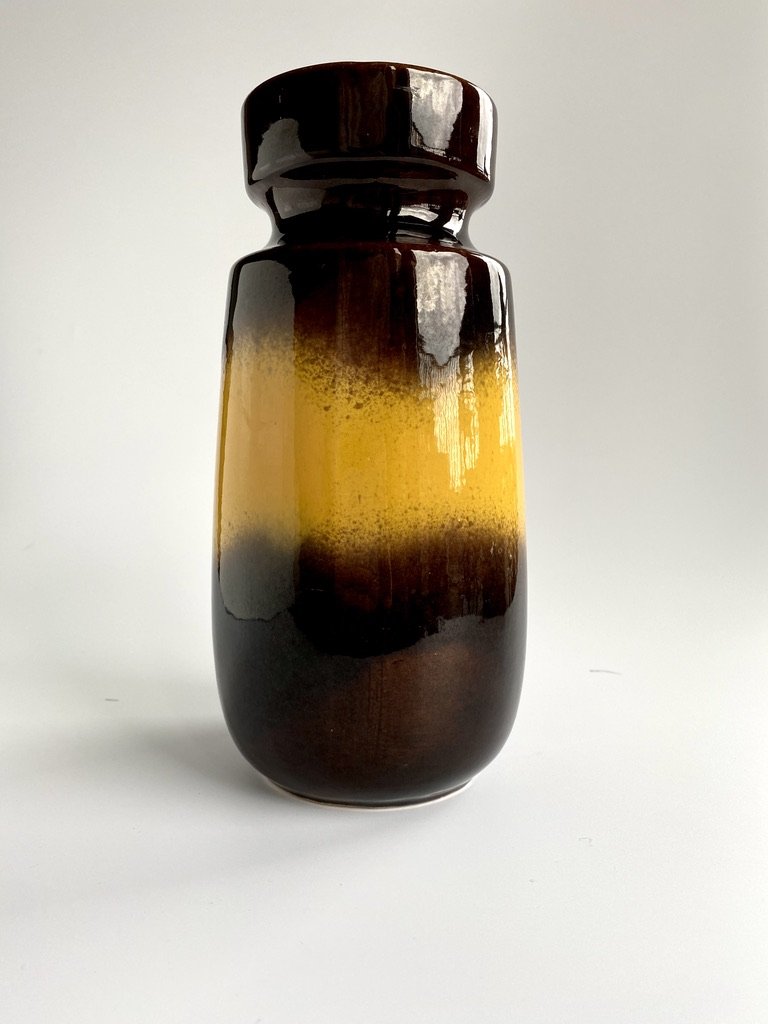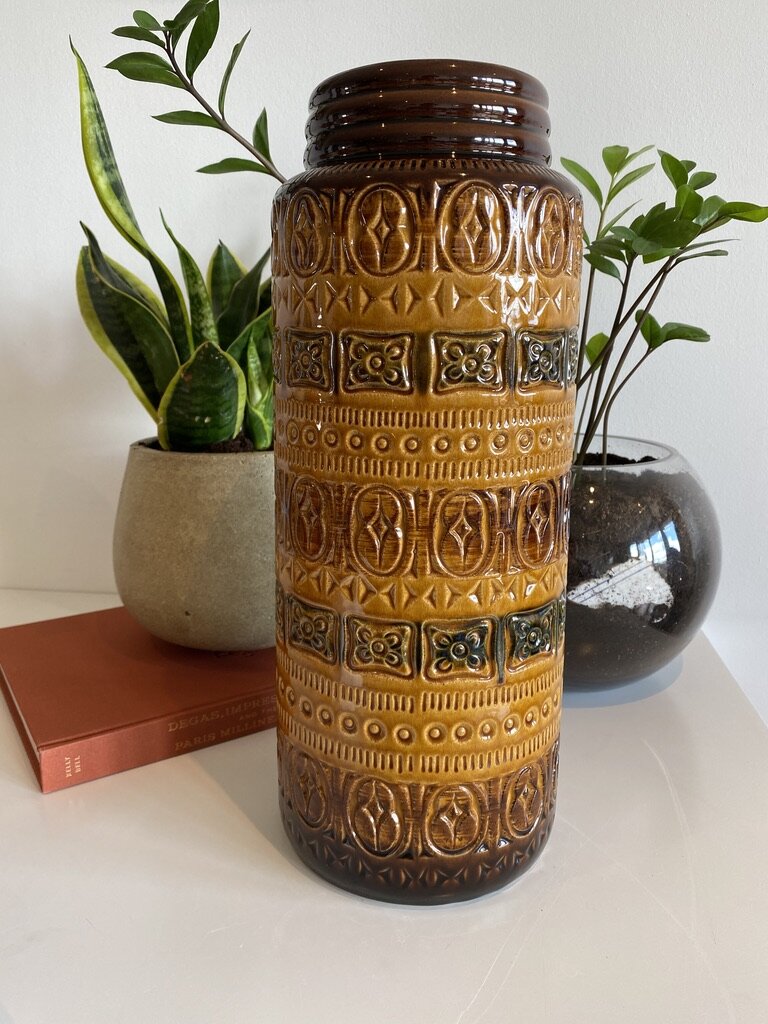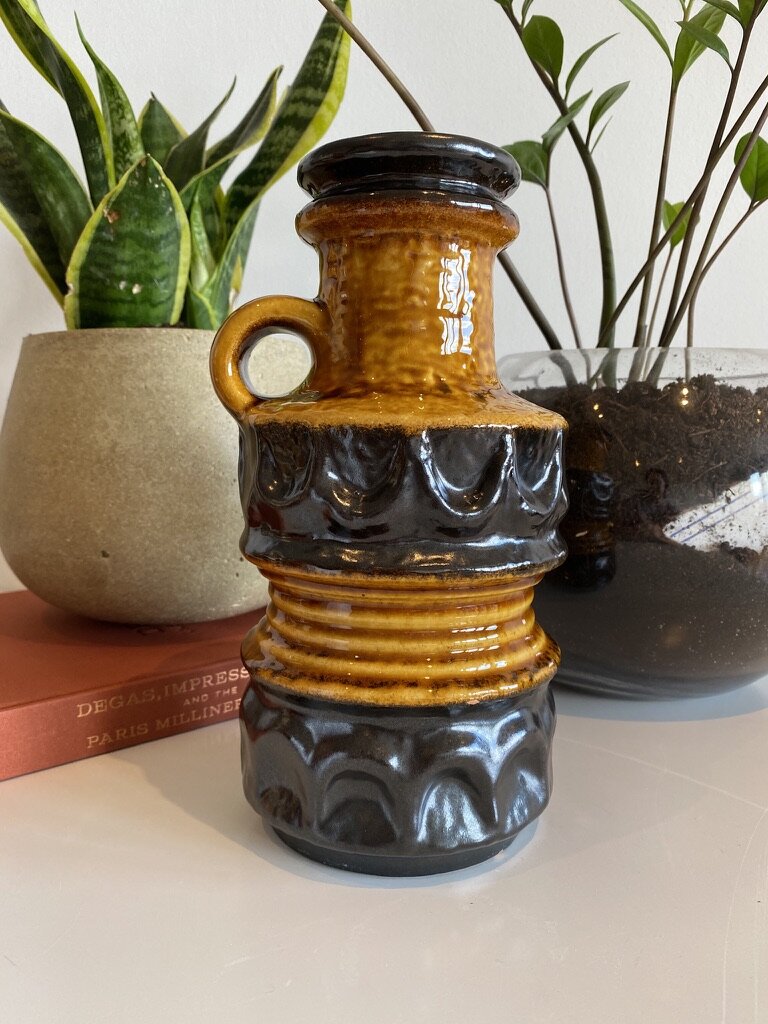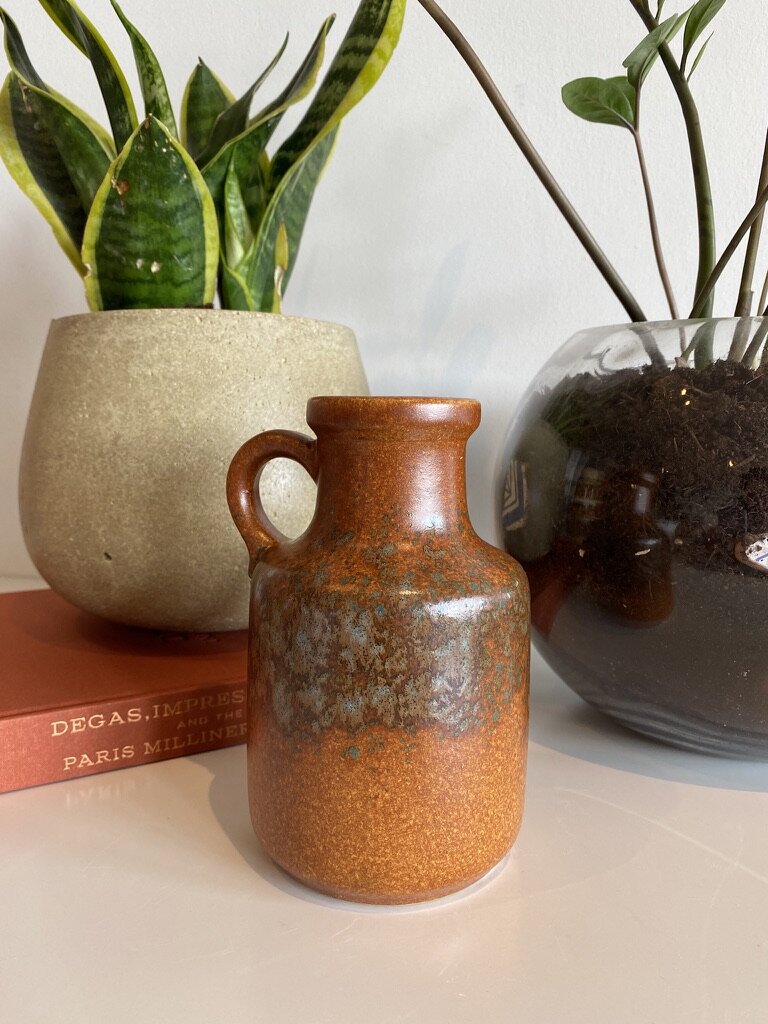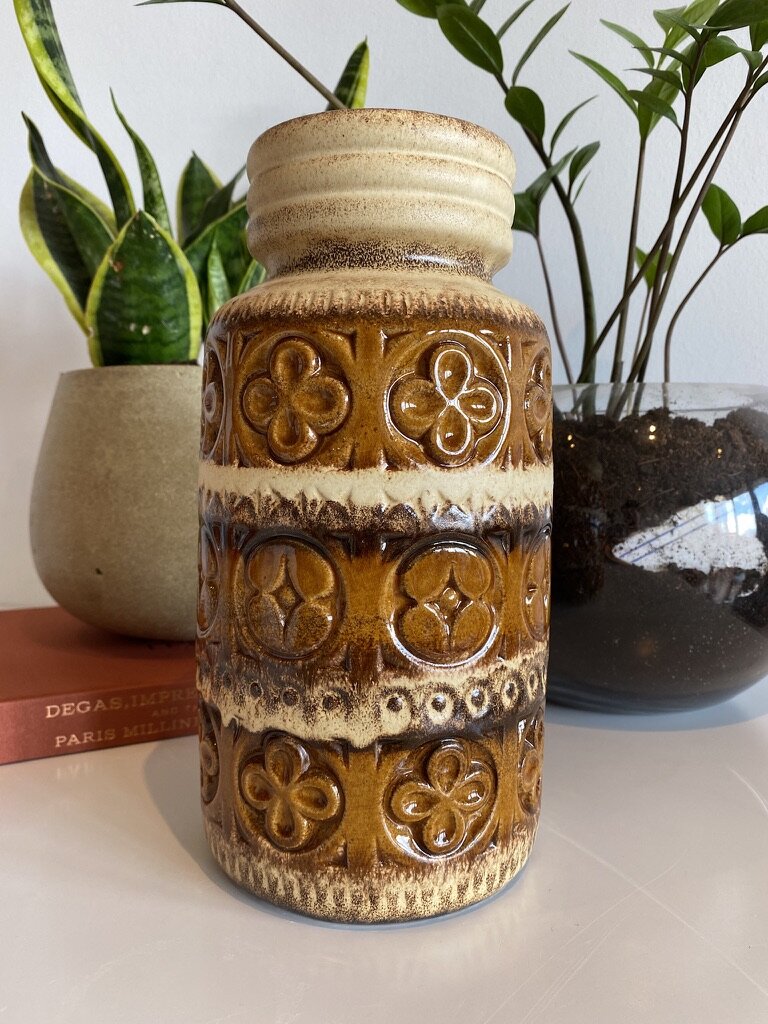What is West German pottery?
West German pottery, also known as "Fat Lava" pottery, gained popularity in the 1960s and 1970s and is now a beloved collector's item. The pottery is known for its bold, bright colours, unique shapes, and lava-like glazes.
What sets West German pottery apart from other ceramics is its use of volcanic glazes. The glazes are thick and textured and often feature lava-like bubbly bumps that give the pieces a fascinating and distinctive appearance. Many of the glazes include bold, bright colours like orange, yellow, and green, which make the pottery stand out even more.
This unique style of pottery was produced by a number of different manufacturers in West Germany, including Scheurich, Bay Keramik, and Ruscha. Each manufacturer had their own individual style, but they all shared the common trait of producing high-quality pieces with distinctive glazes.
The popularity of West German pottery began to wane in the 1980s as people turned to more modern styles of decor. However, in recent years, pottery has experienced a resurgence in popularity, particularly among younger generations who appreciate the aesthetic and unique personality of the pieces.
Overall, West German pottery is a testament to the creativity of its makers and a truly unique symbol of mid-century design and culture. Whether you're a seasoned collector or just starting out, adding a piece of West German pottery to your home is sure to add a touch of personality and flair.

